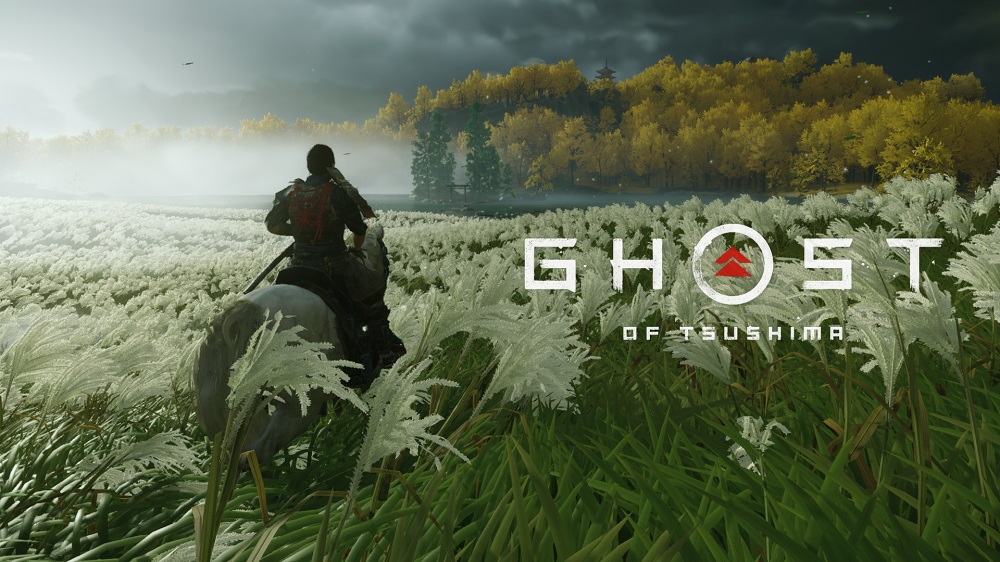If you’re a fan of the Assassin’s Creed series, you’ve at least heard that Ubisoft is very against making a game set in the far east. And between China, Korea and Japan, that last one is probably the most demanded by fans, as well as the one Ubisoft is most against. Something to do with it being too easy, or that it will end up being boring because that theme is so overdone.
Well, if Ubisoft refuses to pluck a low hanging fruit out of some superiority complex or something, then leave it to Sucker Punch Productions to do the job. And oh boy, what a magnificent job it ends up being. As it turns out, one company’s trash is another’s treasure, and it’s a treasure that gamers will be all too happy to enjoy.
A Setting That’s Out Of Left Field
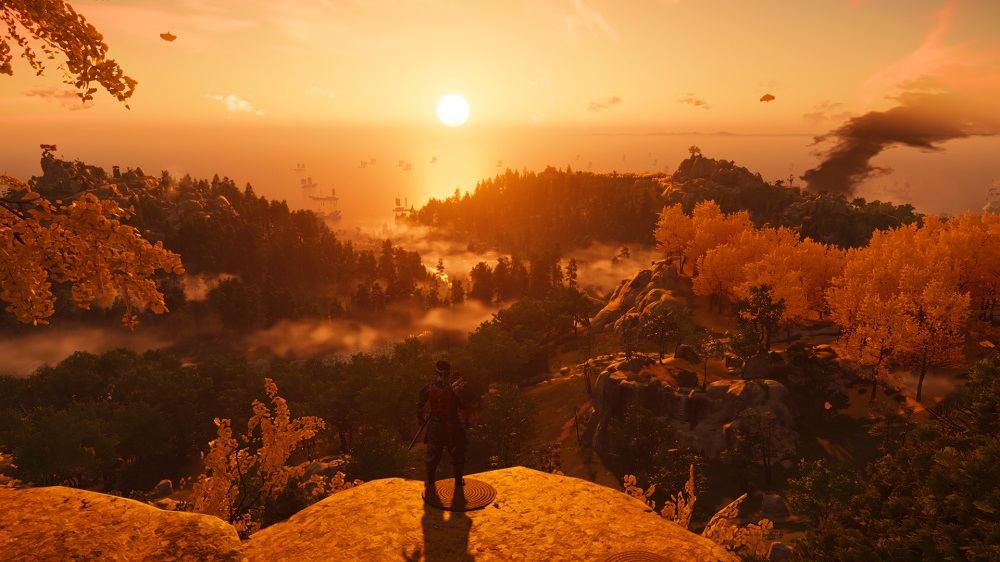
Ghost of Tsushima is set during the Mongol invasions of Japan, on the eponymous island of Tsushima. It’s an unlikely setting for a game based around the samurai, which is great for two reasons. One, it averts the issue of the overdone theme, since most samurai games are based around the Warring States period or later. But secondly, this also allows the game to still have themes that are not completely alien to casual fans of Japanese history and pop culture.
Of course, this presents a conundrum. History buffs will know that, while this is still the age of the samurai, it is one that is very different from the one that the masses are familiar with. Hence, you’ll see period-inaccurate depictions of cultural details, most notably the sword. But again, this is fine. Because a good game deserves a bit of creative license so that it’s something recognisable by everyone.
A Tale Of Honour Versus Victory
Ghost of Tsushima tells the story of Sakai Jin (surname then given name), a samurai in service to the island’s steward Lord Shimura, who happens to be his uncle. As the game progresses and the situation in Tsushima becomes more desperate, Jin slowly and painfully abandons his samurai code of honour and adopt the ways of what we know as the ninja.
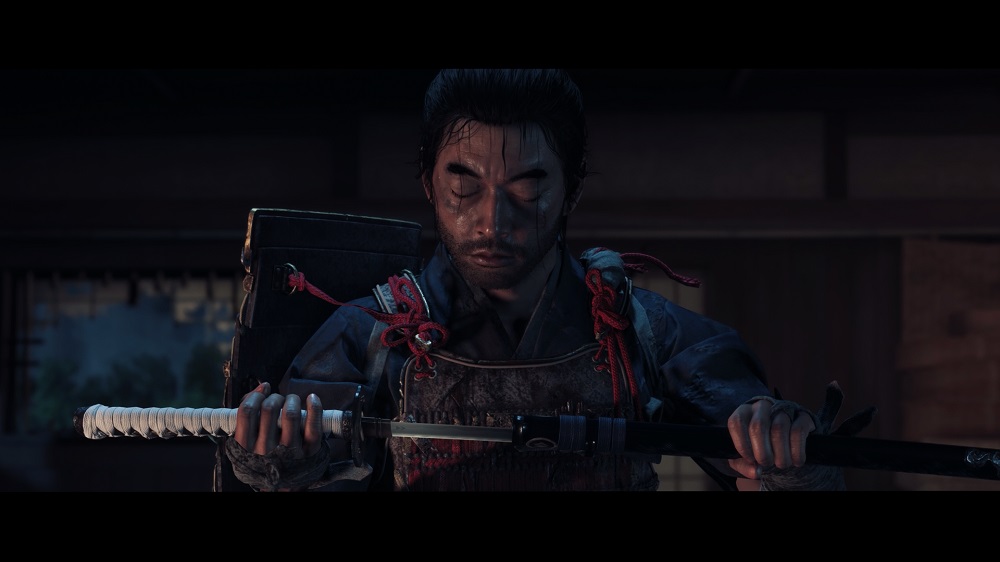
It’s a pretty straightforward story on the surface. But Sucker Punch has written a very compelling and sufficiently deep tale of the transition, which speaks really to people’s rigidity and adversity to change. And with that rigidity comes friction which, when prolonged, leads to some irreconcilable differences. It’s not a new story by any means, but it’s one that’s well told nevertheless.
This is quite nicely represented in gameplay as well. While the plot demands that you slowly turn from a samurai to a ninja, there’s very few missions that actually enforce a certain playstyle. You can start an encounter stealthily and go on a murdering rampage once you’ve thinned out enemy forces. Conversely, you can walk through the front gate of an enemy base, but when you find yourself overwhelmed, throw a smoke bomb and then transition to picking your foes off one by one. The exception is, of course, the main quests. As you progress through the story, key missions will begin to require more stealth. Closer to the end, you’ll get penalised just for getting spotted.
As Good As You Saw In The Gameplay Trailer
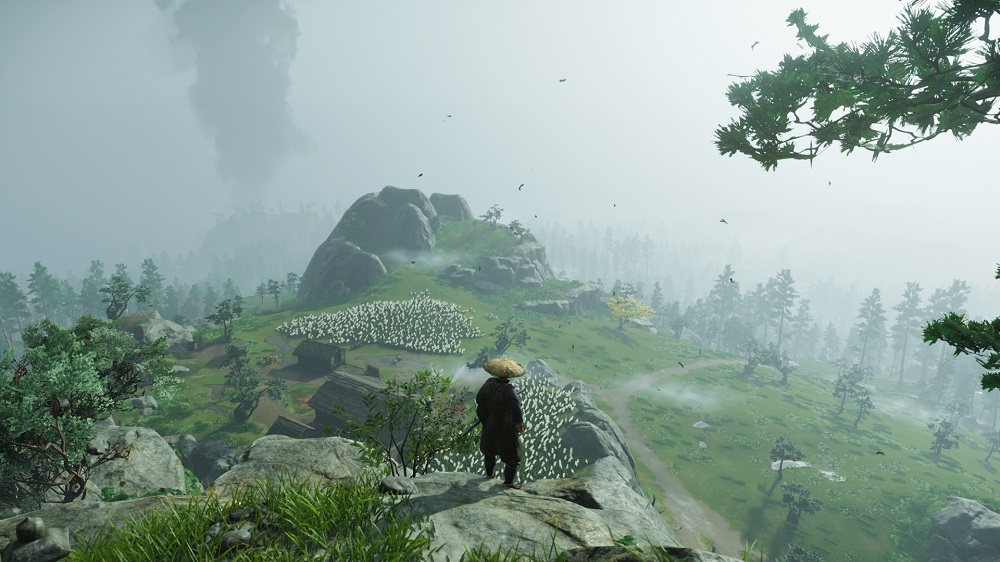
Compared to genre-defining games like Red Dead Redemption 2, Ghost of Tsushima has plenty of room for improvement. To start, the flora definitely looks better than the fauna, of which are extremely limited in variety. Nonessential NPCs have an issue with rigid expressions. And some of your interactions with them ignore elevation differences, which can look jarring when they happen.
When not though, they really add to the immersion in the game. The background dialogue is rich and surprisingly varied, so you can just leave Jin standing in town and listen to the peasants gossip about the ongoing war. A catch to this is that they are not subtitled if you play with the Japanese voices. This is especially unfortunate as – unless you’re fluent in the language – you’ll miss out on a lot of interesting conversations.
Immersion Is Hampered If You Play With Japanese Voices
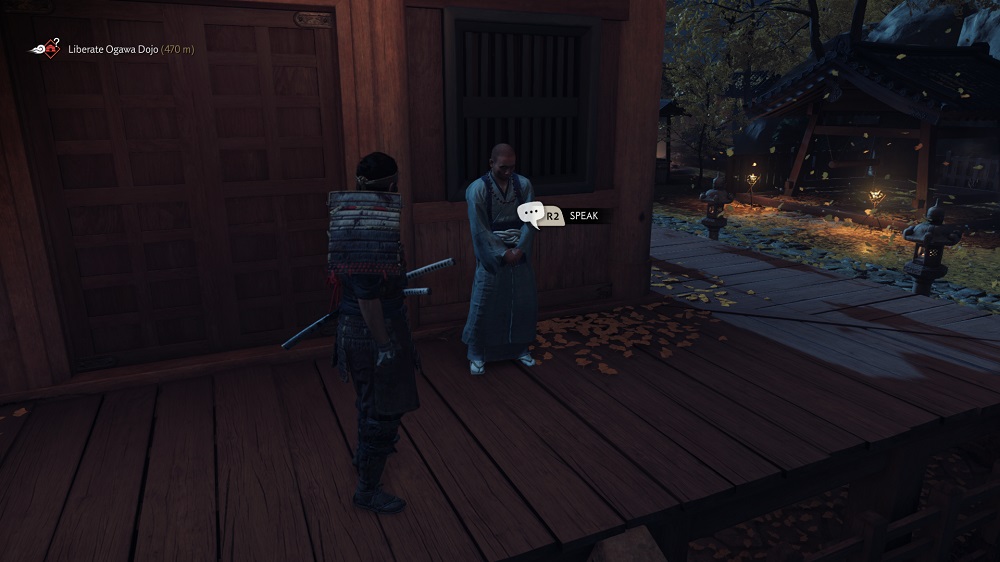
Which brings me to another bit where the game falters; the parity between English and Japanese dialogue. The subtitles are clearly made to match the English lines. So your immersion is hampered if you choose to play the game with Japanese voices. Then there’s the lip syncing, which is also only done for the English lines. This means unless you’re actively looking away from the characters and focus solely on the subs, you’ll see jarring mismatch between the characters’ mouth movement and the sounds that come out of them. This is one of the rare examples of a game that suffers from what may be the reverse of over-localisation.
But at the very least, on the graphics department, what you’ve seen during the gameplay trailer is what you’ll continue to see throughout the game. Ghost of Tsushima barely holds a candle to the best open world games, but when not compared to the very best, the game stands perfectly well on its own.
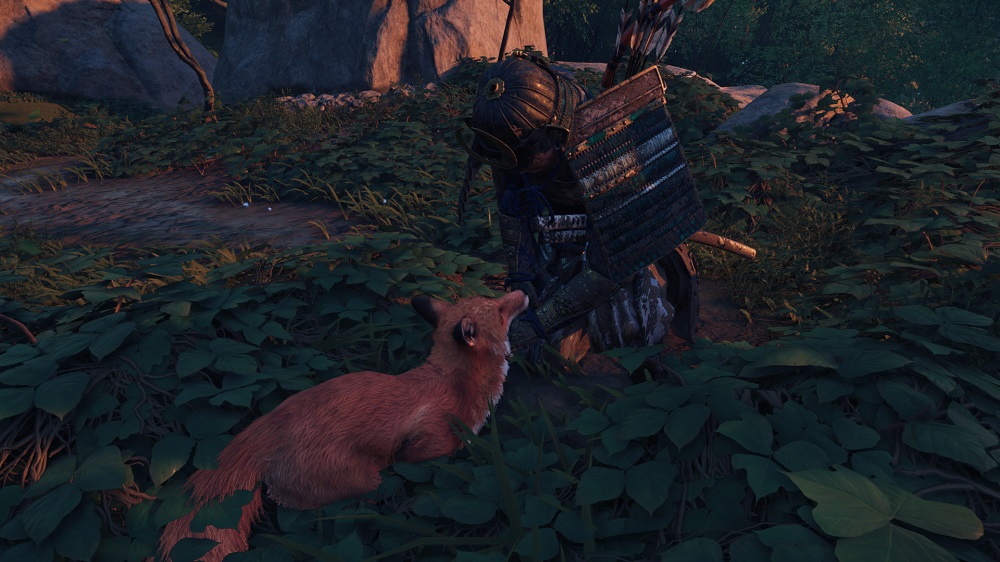
The background music is also great, and there’s a great variety to them. You get really overt ones when you scale a high structure or mountain, to celebrate the beautiful view you behold. Then there are really subtle ones as well that matches the ambient sounds very well without drowning it out.
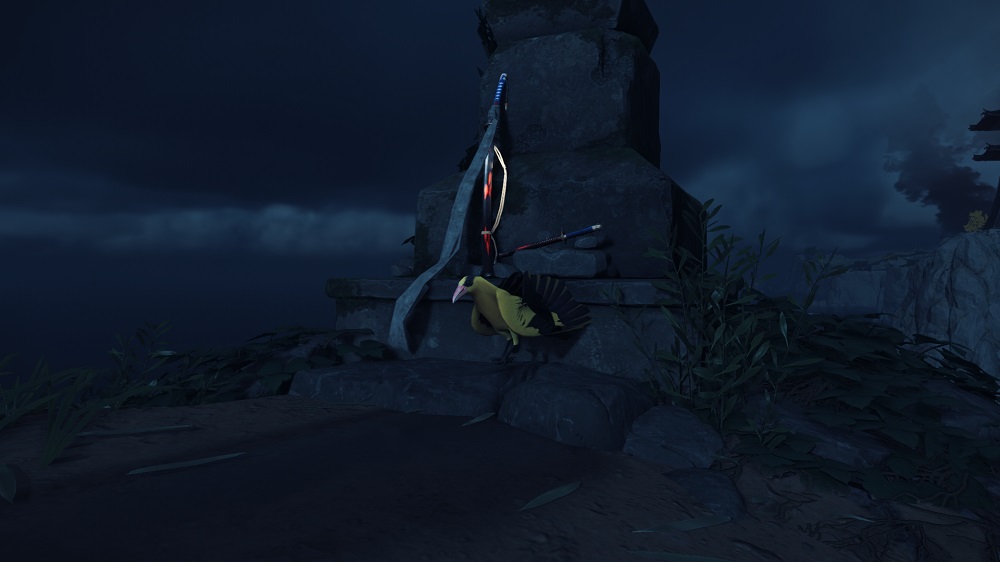
This is great, because the one ambient noise is one of the key ways for the game to lead you to its collectibles – the golden bird. Some, like fox dens and sidequests, will remain marked on your map once you discover them. But there are plenty others that remain unmarked after discovery. So it’s imperative that, when you hear its song, you not only drop anything you’re doing to follow it, but also pick up the collectible if it happens to be an unmarked one.
So Much Love And Care For Sidequests
The main quest line is well done, as you’d expect. For an open world game, it feels fairly well paced, and can have small variations depending on the order in which you do things. If you feel so inclined as to replay the game, different choices will lead to slightly different interactions. Though none of these variations are significant enough that it will change the overall experience.
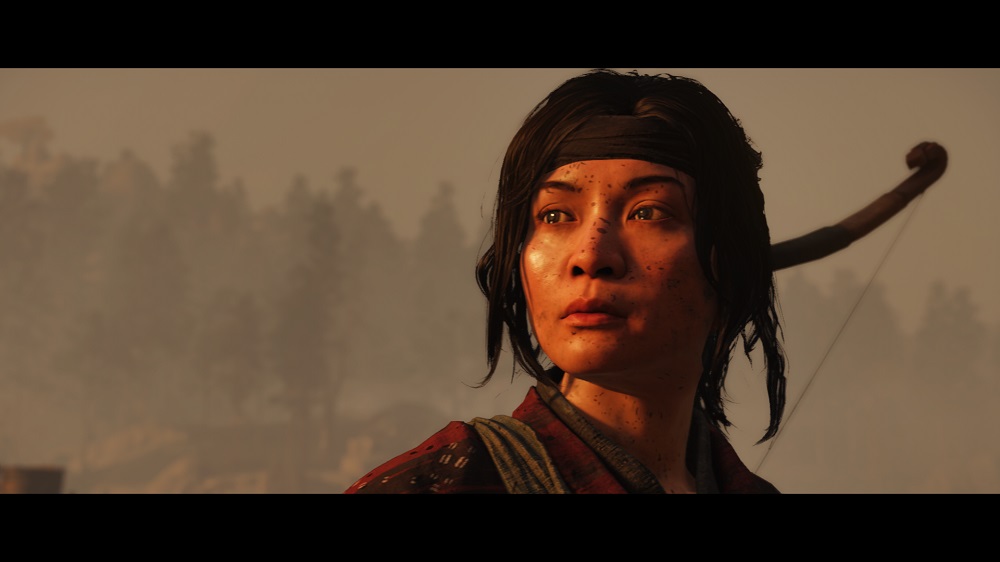
But the side quests is where you really see the attention to detail Sucker Punch has put into the game. Half of these are dialogue-heavy and intensely nuanced. So much so that you’d think they were main quests.
These also contribute to the player’s understanding of the setting. This ranges from the land’s history, the interaction between the samurai clans, even some philosophy about life along the way. Throughout these, you’re provided with so much meaningful exposition that you don’t even realise that you’ve just done a series of mundane fetch quests. Of course, such side quests are clearly marked as such. These can be seen as the equivalent of the Dragon Age’s companion quests.
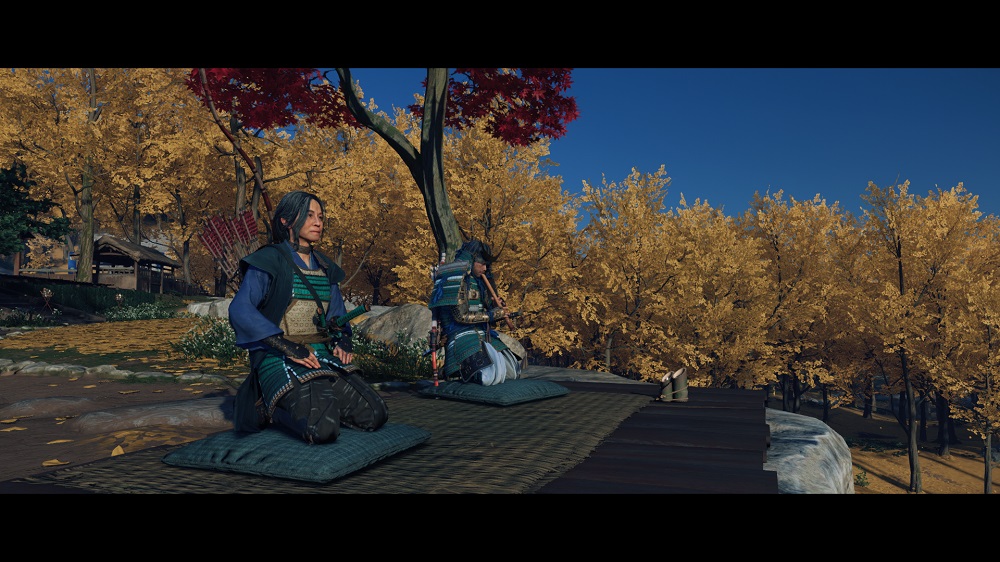
There’s also a good variety among the few key characters introduced throughout the story. You’re introduced to about half of them quite early, just a little into the first act. Without spoiling too much, most of them are conflicted between what they feel to be the right thing to do, and what they feel they have to do instead. Each of them are truly unique, with their own individual motivations, which adds a lot of flavour to the already rich story overall.
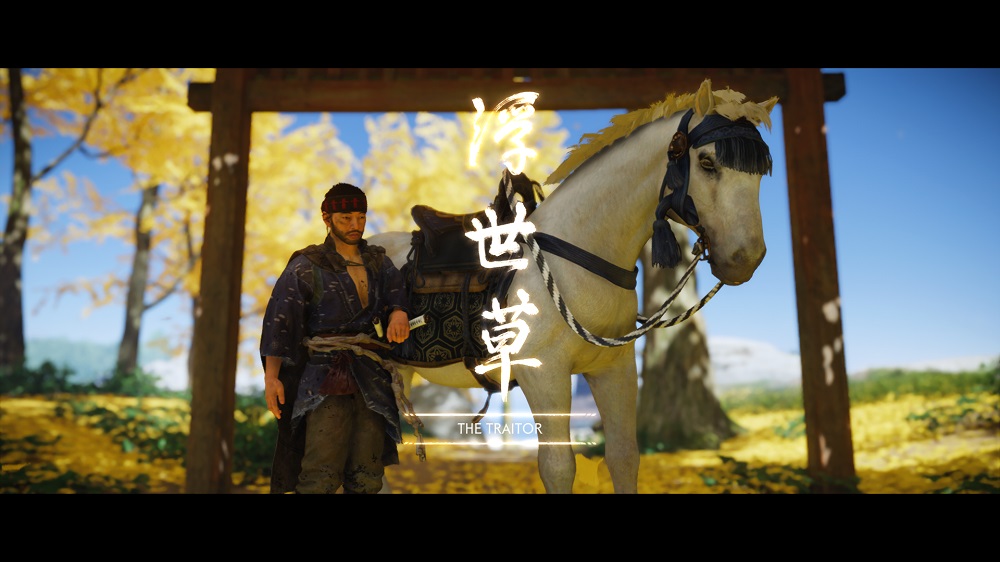
Quests overall are also introduced, and sometimes ended, in a way that’s reminiscent of a period drama episode. This definitely adds to the overall experience of the game, like the missions in Metal Gear Solid 5.
An Effective Mix Of Elements From Various Sources Of Inspiration
Like the story, Ghost of Tsushima doesn’t break any new ground in terms of its gameplay. Nearly everything it does, you’ll have seen it from somewhere else. But Sucker Punch has taken bits that work from seemingly everywhere, and blended them together in a way that makes for a very great experience. This applies to the climbing mechanics, stealth, combat, upgrades and cosmetics.
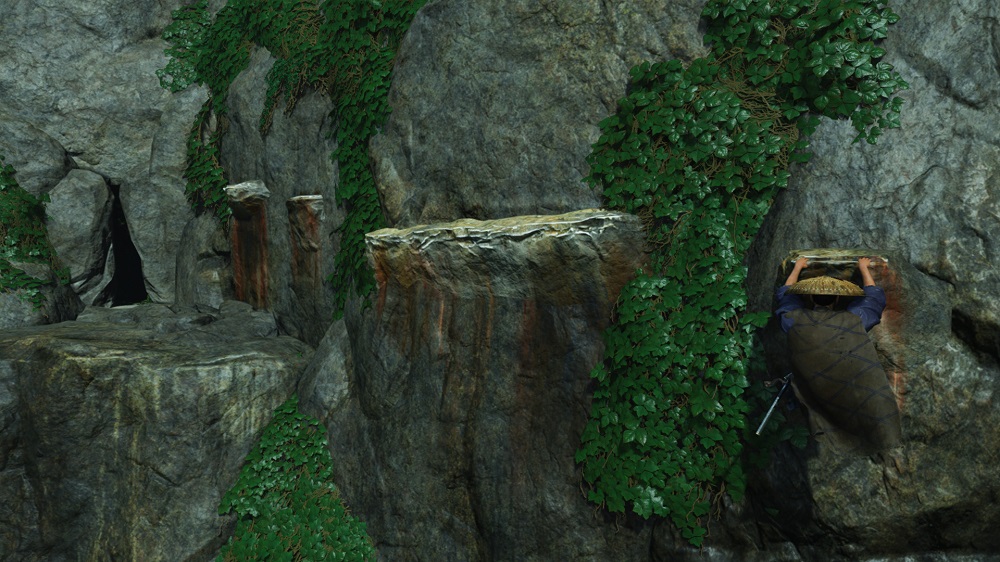
Speaking of which, you’ve got a pretty robust range of cosmetics in the form of masks, headbands and the occasional hats and helmets. In terms of armour, you’ve got considerably less, but this is because they are actually functional – offering different benefits in addition to just looking different.
That being said, on normal difficulty, you can totally have your favourite costume and completely disregard the bonuses they provide. Things may be different on hard mode, but you can swap them on the fly, even mid combat. It can be annoying, not to mention immersion breaking. But the option is there if you really want the best armour for each and every situation.
A Slight Imbalance In Difficulty Tuning
Which brings me to what feels like a slight imbalance in difficulty tuning. Starting the game in normal difficulty feels just about right. But as you progress, you’ll have enough upgrades to breeze through even the stronger enemies in the late game. At this point, hard difficulty may provide the better experience. But having restarted the game on this difficulty, it feels a little too punishing in the early game unless you’ve experienced the game on normal already.
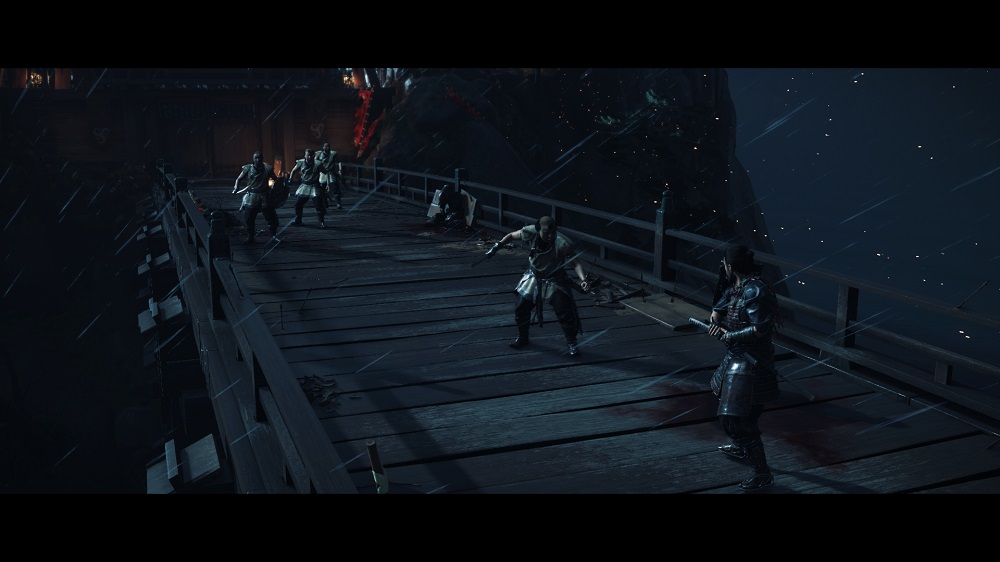
Controls are mostly fine during general gameplay, but oddly, a lot of actions are tied to the R2 button. You use this button to pick up things and loot enemies. It’s also the button to open doors and slip through crawlspaces. This can be annoying when you have items or dead goons next to a door or crawlspace, for obvious reasons.
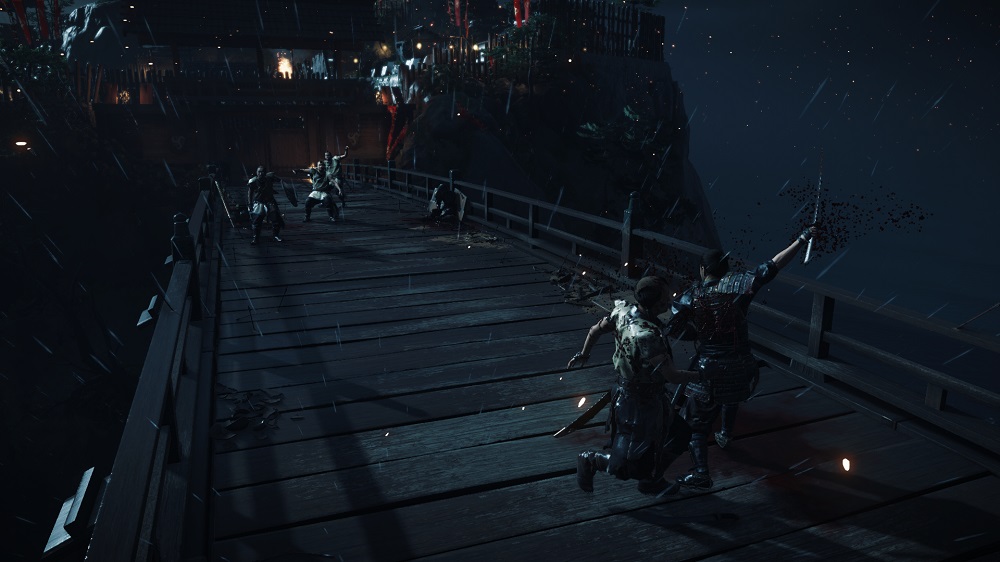
The same applies to combat situations as well. You hold down the R2 button, and then followed by one of the face buttons to select a stance. And you have to do them in order. Failing that, you’ll for example, press the X button before the game registers the R2 press. And as a result you end up jumping like a tool in front of an enemy.
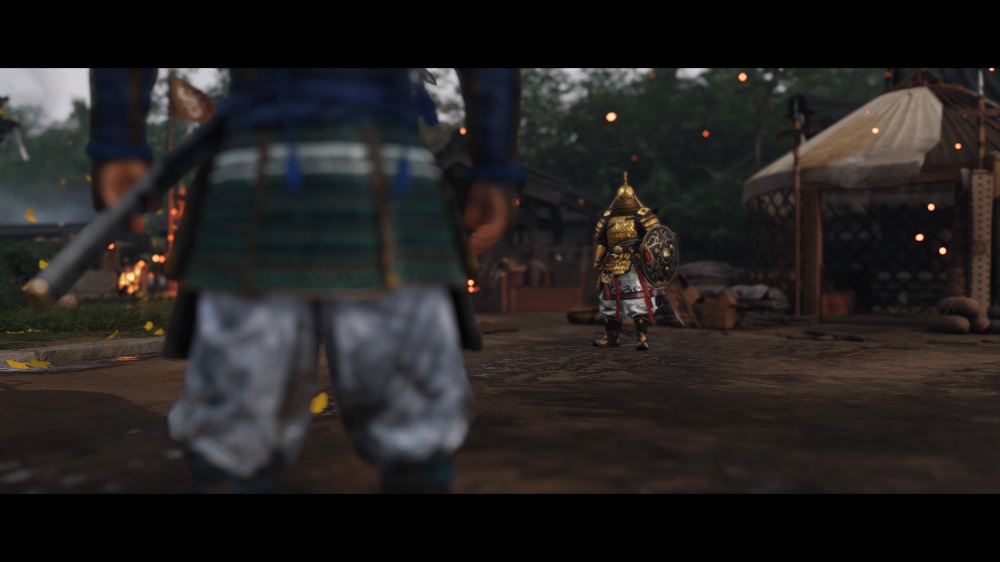
Speaking of combat, the boss fights in the game will really tickle your fancy. This is especially if you’re a fan of films by Kurosawa Akira. They always start with a standoff, which looks great the first few times it happens. You can dial this up to eleven with the Kurosawa mode, which turns everything greyscale and adds film grain effects. But as you encounter more of these, you’ll notice the animations are the same most of the time. This gets stale by the time you get to the first third of the game.
Conclusion
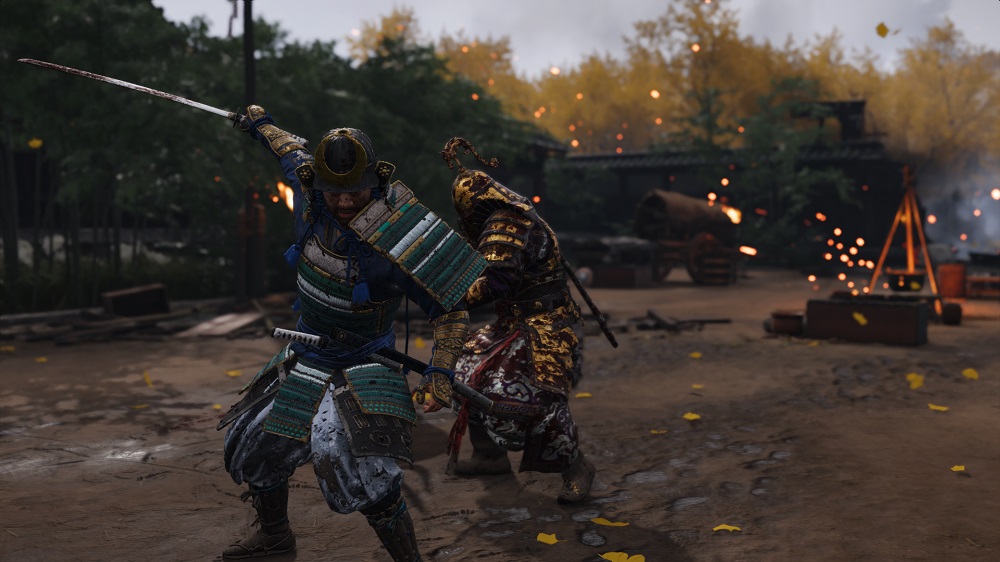
It wasn’t until when the first trailer for Ghost of Tsushima dropped that I remembered an intense desire for an Assassin’s Creed-like game, with Japan being the setting. And now that I’ve played it, I feel like there’s a growing thirst for more. And for better or worse, actual Assassin’s Creed games won’t be able to scratch that itch anymore. After all, the series has gone in a weird direction ever since Origins, in the name of giving the franchise a revision. And losing the plot along the way.
Like the other games that Sucker Punch Productions has worked on, Ghost of Tsushima doesn’t really break any new ground. But this entry is as compelling as the devs’ other works before, with many familiar elements from elsewhere blended into its own unique recipe. Sucker Punch has previously claimed that this game is a love letter to the samurai genre. And it shows.
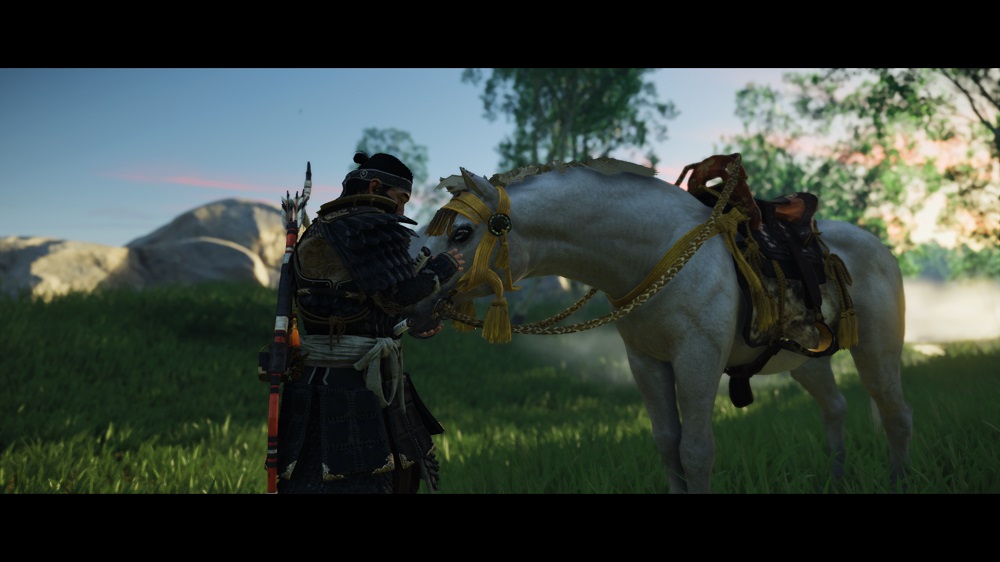
The story isn’t new, but it’s still one that’s been well written. The Japanese lines are perfectly voice-acted even if the lip sync is whack. The characters are memorable, lovable even. To some extent, this even applies to the main villain, and that’s not something you usually say about villains.
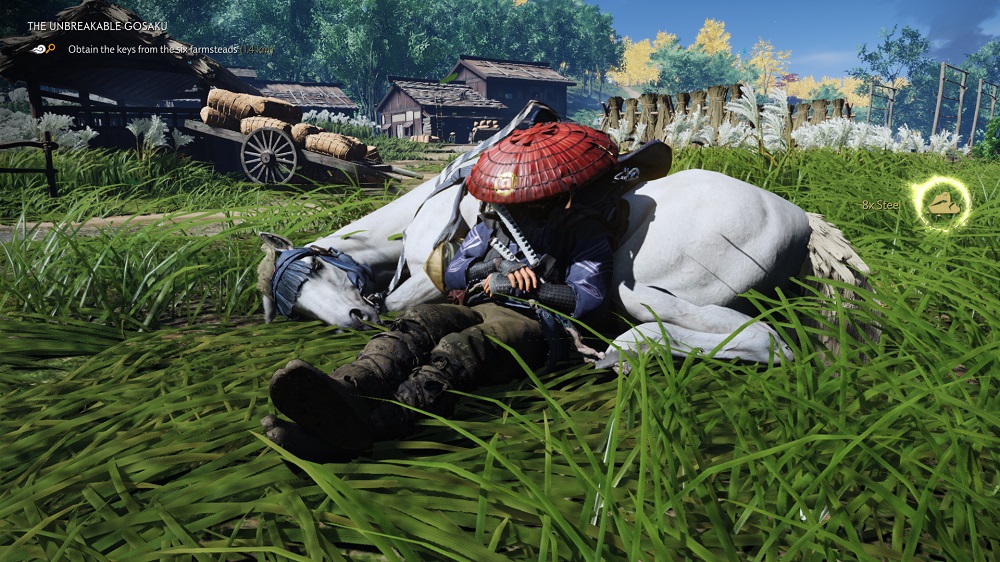
If you like Japan-themed open world games, then Ghost of Tsushima is definitely a game to pick up. It’s engaging, it will last you well over 50 hours, and it’s filling an old void in the market. On one hand, it’s probably not going to win any Game of the Year awards. But on the other, you’ll definitely get your money’s worth, and some.
Follow us on Instagram, Facebook, Twitter or Telegram for more updates and breaking news.


